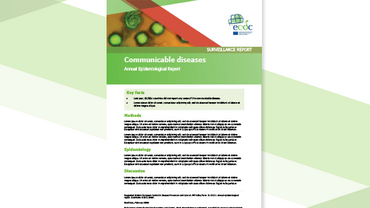Legionnaires’ disease in Europe, 2011
This surveillance report is based on Legionnaires’ disease surveillance data for 2011. The surveillance is carried out by the European Legionnaires’ Disease Surveillance Network (ELDSNet) and coordinated by ECDC. The surveillance data are from two different schemes: the first covers all cases reported from European Union Member States, Iceland and Norway; and the second scheme covers all travel-associated cases of Legionnaires’ disease, both foreign and domestic travel, including reports from countries outside the EU.
Executive Summary
In 2011, a total of 4 897 cases of Legionnaires’ disease (LD) were notified by EU Member States, Iceland and Norway, with a 22% decrease compared to the previous year. Most of the cases (67%) were community-acquired, while 24% were travel-associated and 7% were linked with healthcare facilities. With this decrease, the notification rate of all cases of Legionnaires’ disease in the EU/EEA in 2011 has reached the lowest level since 2004.
The surveillance activities were carried out by the European Legionnaires’ Disease Surveillance Network (ELDSNet) and coordinated by ECDC. Data were collected through two different schemes: the first scheme covers all cases of LD reported from ELDSNet members, while the second scheme covers all reported cases of travel-associated Legionnaires’ disease (TALD), including reports from countries outside the EU. This is the third annual report presenting LD data and the second to also include all reported cases of TALD.
Legionnaires’ disease is a multisystem disease involving pneumonia. Humans are infected by inhalation of aerosols containing Legionella bacteria. The diagnosis relies on specific laboratory tests, and the disease is considered to be widely underreported, mainly because it is under diagnosed by clinicians and under-notified to national authorities.
The ELDSNet will continue its efforts to improve notification in countries where under-ascertainment probably remains quite high, especially by raising awareness, providing laboratory support and training, and evaluating the surveillance systems in place.






